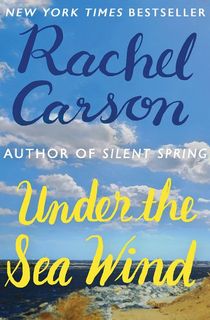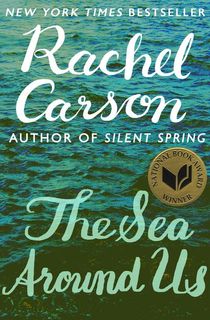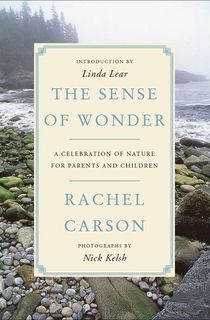Perhaps more than anyone, Rachel Carson understood the importance of appreciating and protecting the natural world. A writer, marine biologist, and legendary environmentalist, she had a knack for bridging unfamiliar science with poetic, sensory language. With the publication of her books, readers of all ages, locations, and educational backgrounds suddenly had access to nature's hidden wonders. It incited a revolution: Carson's research on pesticides resonated so strongly, and so widely, that people began to question if humans truly should conquer nature (hint: we shouldn't).
In today’s world, it’s easy to forget to stop and smell the roses—but if there’s anything Carson taught us, it’s that it's important to do so. From captivating meditations on the sea to game-changing insights on our environmental footprint, the following Rachel Carson books remind us to take a breath, open our eyes, and witness the miracles around us.
1941

Under the Sea Wind
The habits of sea creatures aren’t easily accessible to anyone far from the coastline, or unfamiliar with marine biology—but Carson sought to fix that in her debut. With poetic and creative flair, Carson approaches her subjects as if they're storybook heroes, naming a particular mackerel or eel before tracking its life journey. The effect is a chronicle of East Coast animal life that is informative but never tedious or bogged down by scientific jargon. Instead, Under the Sea Wind has all the trappings of an escapist novel: vivid description, fascinating characters, and magical settings you'll dream of visiting.
Though it released with little fanfare in 1941, the book is now considered one of the most important works of nature writing.
1951

The Sea Around Us
Carson broke onto the scene with The Sea Around Us, which won the 1951 National Book Award and earned a long-term position on the New York Times bestseller list. Like its predecessor, Under the Sea Wind, it disseminates the complex magic of the ocean for the everyday reader—including the wonders that lie in, or rise from, its darkest depths. It was adapted into an Oscar-winning documentary of the same name, though Carson wasn't exactly happy with the finished product.
1955

The Edge of the Sea
The final installment in her sea trilogy, The Edge of the Sea is another showcase of Carson's ability to translate nature's strangest rhythms into concise, poetic writing. It studies the ecosystems of the Atlantic coastline, revealing the secrets of tide pools, incandescent “moon jellies,” and other underwater phenomena. After the book's publication in 1955, Carson began focusing more on conservation work—a transition that would lead to drastic changes in our views of the environment. Read an excerpt over at our sister site The Portalist.
1962

Silent Spring
Those changes came with Silent Spring, Carson’s most famous book and the inspiration behind the environmental movement. When the government launched the “gypsy moth” program in 1957—an initiative that supported the widespread use of pesticides—Carson set out to stop it. She did so with careful research: Over the course of several years, Carson observed the effects of synthetic chemicals on natural ecosystems, and discovered how far-reaching and how adverse those effects truly are. While her conclusions—all relayed in Silent Spring—were received with great criticism, they also prompted the establishment of the Environmental Protection Agency in 1970.
1965

The Sense of Wonder
Carson and her grandnephew, Roger, spent much of their time outdoors, walking through the woods of Maine and enthusiastically watching the wildlife. The Sense of Wonder is the result of these adventures and is, in a way, Carson’s recreation of them: With it, she hoped to instill a similar sense of awe in any child curious about birdsong, the movements of the wind, or the light of the stars.
1998

Lost Woods
Lost Woods is a collection of Carson’s little-known or unpublished writings, but it rings with the passion, poeticism, and wisdom of her most popular books. Each entry was curated by her biographer, Linda Lear, and spans decades of Carson's life—including journal entries from her schoolgirl days to her later speeches on environmental protection. It’s a fascinating look at how Carson evolved into the trailblazer she was and offers a “frequent sense of being in [her] company” (Publishers Weekly).
This post is sponsored by Open Road Media. Thank you for supporting our partners, who make it possible for Early Bird Books to continue publishing the book stories you love.
Featured photo courtesy of Alchetron


